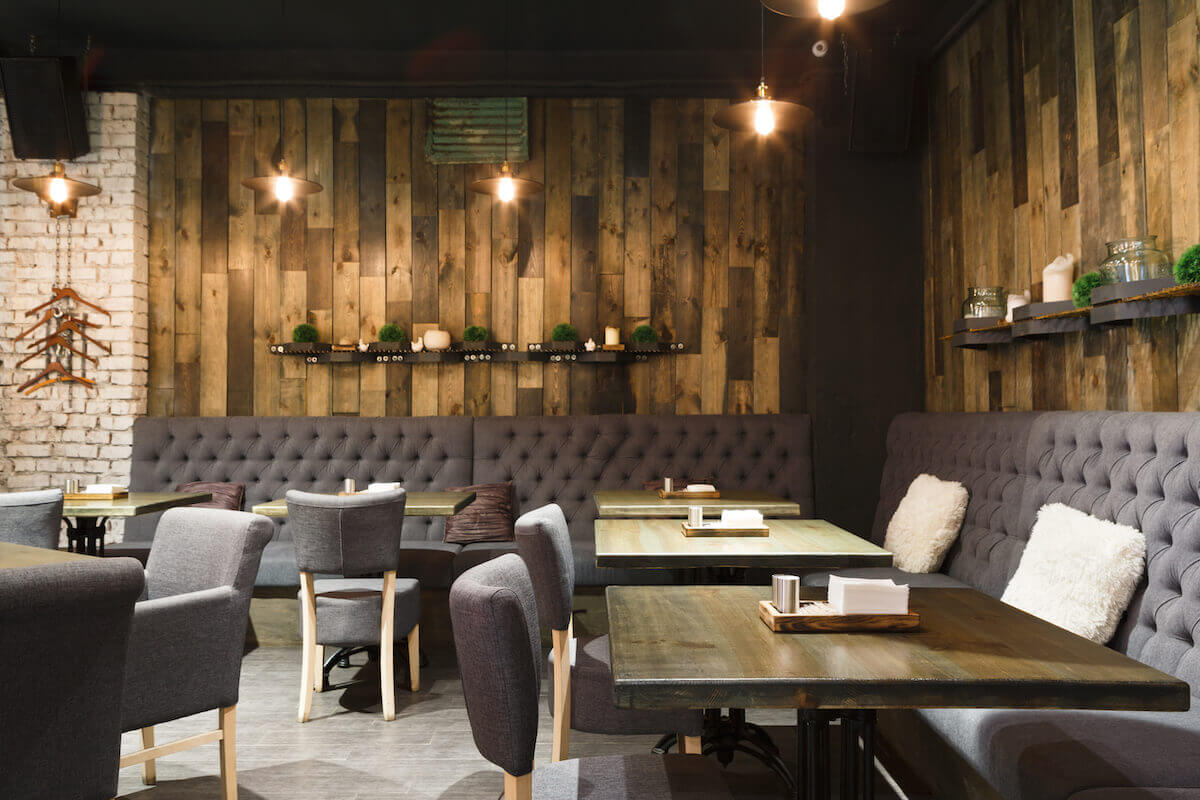The owner’s guide to restaurant seating and table management
Creating your dining area is one of the most exciting parts of opening a new restaurant.
Deciding on cross-back or ladder-back dining chairs, whether walnut wood tables will match the upholstery, and if bistro sets would complement your outdoor seating are all fun issues to tackle, but good restaurant design will balance ambiance with practicality.
Restaurant furniture and seating options are only part of the front-of-house equation. Table management, the practice of seating the right groups at the right tables at the right time, will maximize occupancy and sales while helping your FOH staff breathe easy.
In this article, we’ll show how proper restaurant seating and table management work together to help reduce empty tables, improve turn times, and enhance your guest experience—all going straight to your bottom line.
Consider these 4 factors for your restaurant seating
No matter how good your food is, your seating layout can make all the difference in someone’s dining experience. While there are no hard and fast rules around how to set up your restaurant seating, your seating options should match your restaurant type and customers’ expectations.
1. Space
Customers should have enough space between them and the next table to feel comfortable, but not so much that they feel isolated. The amount of personal space varies by restaurant type and customer demographic. A fine-dining restaurant would provide more space for patrons in its dining room than a quick-service burger joint. Younger guests may also be more comfortable with tables being closer together than their older counterparts.
A good rule of thumb for your dining area is to have at least 10 square feet per cover and no more than 18 square feet per cover. For example, if your dining room is 2,000 square feet, your capacity should fall between 11–200 covers.
2. Proximity
Structure your dining area so prime real estate is reserved for customers, with enough room for the front-of-house staff to easily navigate the floor with trays of food and drink in tow. Nobody wants to be in the back corner near the kitchen door, constantly distracted by staff moving in and out, or next to the host stand with new guests passing by. These situations are unavoidable in some dining establishments, but a few interior design tricks, like placing a plant wall between the host stand and dining room, can help you make the most of your dining space.
3. Durability
Restaurant furniture is an essential line item for your business plan. High-quality restaurant chairs and tables made of solid wood may be appealing but don’t always fit your ambiance or budget. Durability, however, should be a critical factor in your furniture choice. Laminate table surfaces are a good choice for durability and high turnover, as they’re easy to clean and do not stain if appropriately maintained.
Commercial-grade metal restaurant chairs and metal bar stools at high-top tables have made a surge in popularity across the restaurant business, reflecting both an industrial-chic trend and a desire for furniture that can take heavy wear and tear. When opting for other styles, be sure to consider the warranty on your commercial furniture selections.
Take note of both chair and table bases. The sturdier the base, the less likely they are to break, saving you money and time on repairs or replacements.
Outdoor furniture especially needs to be resistant to extra wear and tear from the elements. Metal is a clear choice, here—though teak is durable—and removable cushions can be added for comfort and removed if there’s rain. Most patio furniture is built to be water resistant, but you should maintain any painted surfaces to prevent rust. Stackable furniture is also an excellent choice since it makes cleaning any outdoor area easier and saves space.
4. Comfort
Guests should naturally enjoy their dining experience, but their comfort level in their seats should match your turnover goals. If you’re a high-volume restaurant looking to turn tables as quickly as possible, those backless metal bar stools may help prevent people from lingering for too long. Conversely, if you’re a fine-dining establishment with 1–2 seatings a night, plush restaurant booths and comfortable wood chairs will encourage people to stay and order additional drinks and dessert. Side chairs at booths should be as comfortable as the booth, so no customer feels like they got the short end of the stick.
Restaurant bar stools come in many options, and putting some thought into what chairs you offer at a bar can help customers stay longer. Consider offering comfortable bar stools with backs if you’re running a higher-end operation like a cocktail or craft beer bar. A comfortable upholstered seat at a bar can help a place look more upscale and make customers feel like their money is well-spent.
Choose the right restaurant furniture

Booths, tables, high-top tables, and bar seating each provide a different type of dining experience. Mix and match these options to best meet your restaurant type and business goals.
Booth seating
Restaurant booths can convey luxury for higher-end restaurants and tradition and relaxation for more mainstay establishments. They encourage customers to stay longer and can increase average check, but may work against you if you’re trying to turn tables faster. At the same time, booths can only seat a fixed number of people, so you may find yourself seating two people at a six-person booth unless you have enough reservations to fill those areas frequently.
Table tops
Tables allow for a dynamic restaurant floor plan. Combining and separating tables to fit party sizes in real-time enables you to maximize occupancy. In many cases, restaurants will line their walls with booth seating to accommodate new table arrangements while also providing a booth experience for at least some of the party.
Bar stools
High-top tables have become increasingly popular, allowing your restaurant to expand the bar experience beyond the bar itself. If your ambiance encourages mingling and other situations where customers would like the choice of sitting or standing, high-top tables with bar stool seating will make for a win-win situation.
Use table management software

Table management software allows restaurateurs to fill open tables effectively, allocate seating for online reservations vs. walk-ins, and track peak occupancy periods. While these platforms come at a cost, they’re worth their weight in gold regarding their automation of your FOH operations.
When choosing a front-of-house system, consider the functionality of creating customizable seating arrangements to match your dining area. These systems should also be able to use historical data to accurately predict how quickly tables will turn, providing accurate wait-time estimates. Your table management software should maximize occupancy while saving your hosts and managers valuable time in determining seating arrangements, taking phone calls, and answering questions about wait times during peak hours.
Your table management software should also integrate with your point of sale system. Not only does this allow you to manage everything with one tablet, but the collective data on both your seating and orders provides you with valuable information to make critical business decisions, like whether to restructure your seating arrangement, change your menu mix, or update your pricing.
According to a January 2022 Restaurants Consumer Journey Study by Kantar Profiles, 57% of those surveyed use their mobile devices to discover restaurants. With today’s reliance on technology, customers expect digital convenience and added value. To meet customers where they are, it’s crucial to reinvent your brand messaging.
Make the most of your restaurant floor plan and table management software
Choosing the right seating layout, table types, and restaurant table management software will be critical factors in determining your dining room’s profitability and guest experience. And while there’s a wide selection of seating arrangements and table management systems, all dining establishments will benefit from a full front-of-house system.
Yelp Guest Manager takes table management to a new level, managing online reservations and waitlists to minimize no-shows and providing accurate wait times in real-time for walk-ins. POS system integrations and table management features help you improve staffing, scheduling, and seating. Get started with Yelp today.
